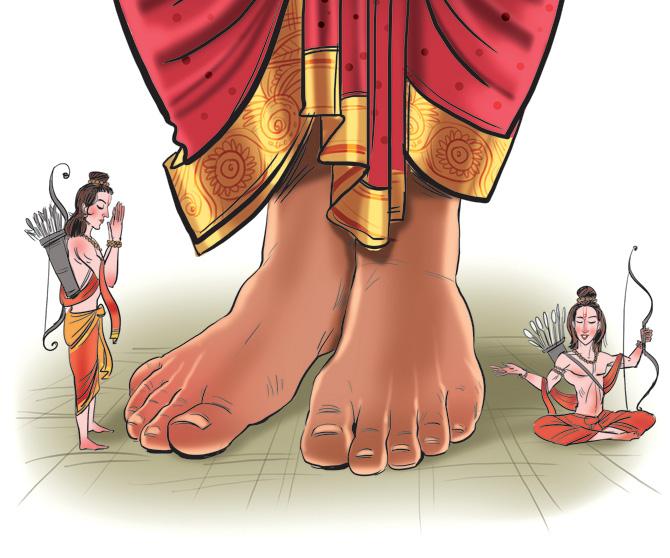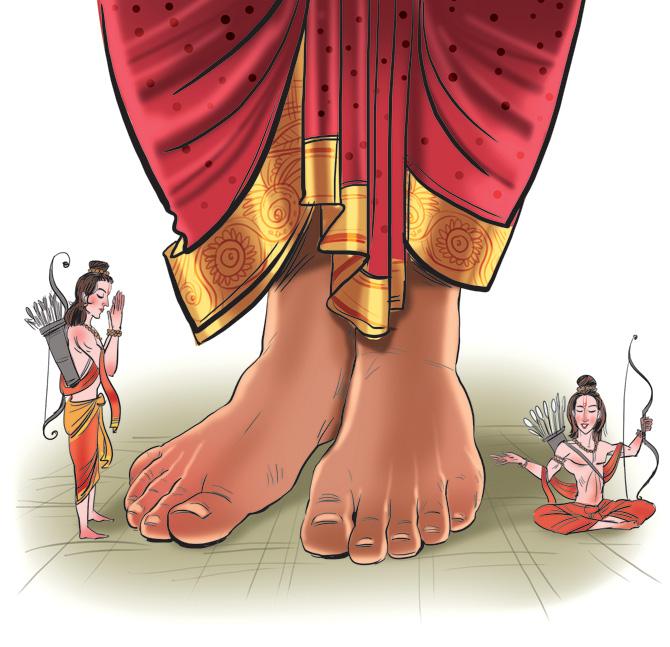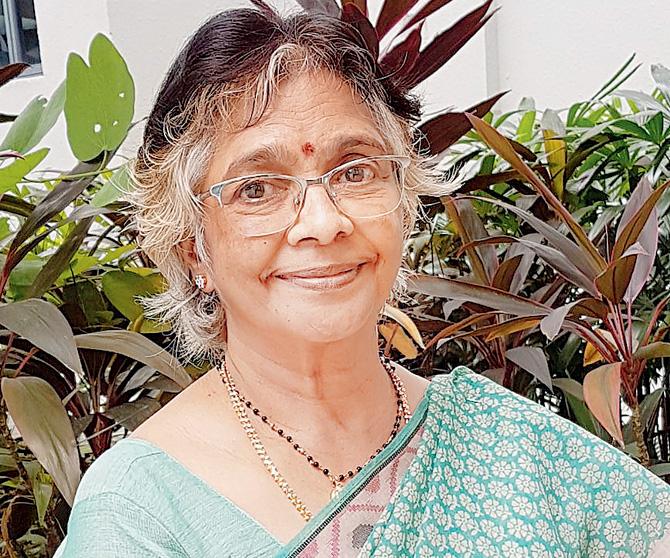Deepavali celebrates Ravana's defeat and Ram's homecoming. India's best-known mythological fiction writers share their favourite Diwali story


ADVERTISEMENT
A woman saved the world
Shared by Radha Vishwanath

In the southern states, Deepavali is associated with the killing of Narakasura, the son of Lord Vishnu and Bhoodevi. It's a story I have grown up with and I like it for its sense of woman power.
Narakasura was killed by Satyabhama, a reincarnation of Bhoodevi.
While there are contradictory versions, the story I grew up with says that when the child was born to Bhoodevi she was restored to her position from the depths of the ocean by Vishnu in his boar-incarnation (varaha-avatar). Being a mother, she didn't want the child to die, even though he was a rakshasa. She asked Lord Vishnu to bless him with a long life. He told her, "That's okay, but he has to die." She told him, "Then bless him that he should die at my hands; I should be the reason for his death. I should wish it and only then it should happen."
The story goes that Narakasura went to the three worlds and raided them. While he was in Swarga, he stole the earrings of Aditi, considered the mother of all gods. Narakasura also stole the white umbrella belonging to Varuna. The theft of the earrings was akin to rape, her honour had been sullied. She was hurt and wanted him killed. Indra tried to fight Narakasura but was unable to reach Narakasura's home in the fortress-like setting of Pragjotishpura. Unable to even reach the rakshasa, Indra went to Krishna for help. Krishna agreed to help. However, given the inaccessibility of Pragjotishpura, he commissioned Garuda (the only time Krishna used the Vishnuvahan) to transport him and his entire army. How Satyabhama tagged along is interesting.
Krishna knew that only a woman could kill Narakasura and he knew that Satyabhama was the reincarnation of Bhoodevi. "I want to go. I want to see a war and how you fight." Satyabhama, who was completely under the spell of maya, insisted.
"Don't think this is Nandanavana. There won't be fragrant flowers or breeze and no chirping birds. Instead, there will be blood, gore and the cries of dying people," Krishna warned her.
Satyabhama said, "I am not chicken hearted. I want to see you fight. I have heard of your great valour."
Krishna underlined this with, "Okay, but remember I am taking you only because you want to go."
Once the war started, Krishna and his army fought the generals, sons of Narakasura and the entire army. Then, they breached the fort. Narakasura used the Shaktiastra and hit Krishna on the head.
Krishna fainted and Satyabhama got upset and angry. In her rage, the woman who had not even learnt warfare took up Krishna's bow, shot an arrow and killed Narakasura. Her thought, "I must kill him," made the boon come true, ensuring that the dreaded rakshasa died.
Radha Vishwanath is the author of Ravan Leela
Why Diwali comes a month later to the hills
Shared by Ashwin Sanghi

Most of us associate Diwali with the return of Lord Ram to Ayodhya on the darkest new moon night of the month of Kartika. But, there is one part of India that celebrates Diwali almost a full month after that date. In many districts of Himachal Pradesh -- Ani, Nirmand, Shillai, Giripar, Sangrah, Rajgarh and Chopal -- this timelag version of Diwali is known as Boodhi Diwali, literally meaning old Diwali. I have always been fascinated by this regional variation. Why should a mainstream festival be celebrated a full month later in some regions?
If we view the Ramayana as a historical rather than mythological event, the logic of Boodhi Diwali becomes apparent. When Lord Rama entered Ayodhya after 14 years of exile, the news of his arrival spread. The citizens of Ayodhya began celebrating by lighting mud lamps and distributing mithai. But this rejoicing would have been limited to the capital and immediate surrounding regions. Many mountainous and inaccessible areas would have been unaware of Ram's return. The news of his victory over Ravana and his safe homecoming would have reached these corners of the kingdom after several weeks. Hence, the people living in these parts rejoiced a full month later. Thus, Boodhi Diwali is observed on the first new moon after regular Diwali in these regions.
But, Diwali is not only about Rama's return. Diwali is also variously associated with the incarnation of Lakshmi, the killing of Narakasura, the return of the Pandavas, the rescue of Lakshmi, the coronation of Vikramaditya, attainment of nirvana by Mahavira and the return of Mahabali to the subterranean world. But in the Boodhi Diwali districts, it is related to the victory of the gods over demons, Dano and Asur who resided there as snakes. As part of the celebrations, a rope fashioned from grass and resembling a snake is carried into the fields. It is then cut into pieces, thus representing the victory of good over evil.
And, ultimately all these ideas constitute the core of Diwali, irrespective of whether you celebrate it a month earlier or later. Destruction of darkness with light. Spiritual awakening. Renewal. Birth. Material prosperity through the arrival of Lakshmi. In that sense, Diwali is a magnificent umbrella. Anyone can sit beneath it and create yet another reason to celebrate.
Ashwin Sanghi is the author of The Rozabal Line, Chanakya's Chant, The Krishna Key and The Sialkot Saga
Ram got Ravana to share his knowledge with him
Shared by Amish

The story that occurs to me is one that's not part of the official Valmiki Ramayan, but is a very popular tale in the folk traditions in north India.
Ravan may have committed many crimes, no doubt, but he was also a brilliant intellectual and a very good warrior. And so, the story goes that after Ravan was shot and lay dying, Lord Ram told his brother Lord Laxman, "The man is a genius and his knowledge should not go waste." Lord Ram then asked Lord Laxman to go sit with Ravan and learn from him. Lord Laxman, as you know, was quite short-tempered.
He went to Ravan who lay on the ground and stood close to his head and said, "Lord Ram said that your knowledge should not go waste. So, tell me what you know." And Ravan just turned his face and did not say anything.
Lord Laxman came back to Lord Ram and said, "He is still arrogant and is not saying anything." Then Lord Ram asked him, "How did you ask him? Where were you standing?" "I was standing close to his head." was the answer.
Lord Ram told Lord Laxman that that was not the way one should ask Ravan to share his knowledge.
Lord Ram went to Ravan and he stood close to Ravan's feet and asked politely, "Ravan you have earned a lot of knowledge. You are a devotee of Lord Shiva and it's important that this knowledge survives. If you share it with me, I will make sure that it does.
And also, that it will never be forgotten that you gave this knowledge to me."
Then, Ravan started speaking. The lesson here is that even someone as knowledgeable and great as Lord Ram, showed humility and kindness towards an enemy. He realised that the war was over. The story also shows that everyone has something good in them, even Ravan.
Amish is the author of the Meluha series, Scion of Ikshvaku and Sita: Warrior of Mithila
Narakasura and the cycle of karma
Shared by Anand Neelakantan

It's fascinating to see how the chain of karma (action) and karma phala (fruits of action) operate in our Puranas. We can see this link in several epics. The Puranas are rarely black and white, and the stories have never been about Good versus Evil, as they are being made out to be. It's Abrahamic religions that operate in a binary way -- god versus satan, virtue against sin, and eternal life against death. Eastern philosophy believes in the cyclical nature of life.
The links of karma and karma phala are not straightforward. And, this is evident even in the most famous story surrounding Deepavalai, that of Narakasura.
Narakasura was the son of Vishnu and Bhoomidevi. When Vishnu took on the avatar of Varaha (bore) in the hill of Hiranyakasha, a son was born to him and Bhoomidevi or mother Earth. Bhoomidevi requested Vishnu to bless her son to become all powerful.
Vishnu complied. This is karma. Let's see how karma phala unfolds. The son grew up to be arrogant and conquered the world. He kidnapped 16,000 women and unleashed a reign of terror. Thus, Vishnu's vardan of conquering evil led to a chain of events that ended up creating more evil. Narakasura could only be defeated by Krishna and his wife Satyabhama, incarnations of Vishnu and Bhoomidevi. In other words, those responsible for creating the evil would have to find a solution, too. Deepavali is the day when Krishna and Satyabhama killed Narakasura. Thus, they had to perform an action -- or karma -- to defeat evil, which came as the karma phala of their own action. This action in turn created another chain of events.
Krishna married the 16,000 women. However, he bore an evil son from another wife, Jambavati. This son, Samba, was so evil that Krishna had to curse him to become a leper. Sambha became the cause of destruction of Dwaraka and the annihilation of the Yadava clan. As Dwaraka was sinking, Krishna asked Arjuna to take his 16,000 wives to Hastinapura. On the way, these wives were captured by rakshasas under the leadership of Durjaya. They defeated Arjuna and took away the wives.
Who were these rakshasas? They were reincarnations of the rakshasa who was killed in Lanka by Rama when he had waged a war to rescue Sita from Ravana's captivity.
So, in one birth, Rama kills 16,000 rakshasas to save his wife. In the next birth, 16,000 of his wives are captured by the same rakshasas. And who kills Krishna? It is Vali, killed by Rama, who is reincarnated as Jara.
By lighting lamps, we are reminding ourselves that for every light, there is a shadow. By lighting crackers, we tell ourselves that even the greatest flash of light and booming sound is temporary in the vast darkness of time. That is why God in Indian culture is known as Kalapurusha. That is why Shiva is Kalabhairava and in Gita, Krishna says I am Time. And, life is a function of endless cycles of action, result and reaction.
Anand Neelakantan is the author of books based on the Ramayana, such as Asura: Tale of the Vanquished, Ajaya: Roll of the Dice and Ajaya: Rise of Kali. More recently, he has written The Rise of Sivagami: Book 1 of Baahubali - Before the Beginning
 Subscribe today by clicking the link and stay updated with the latest news!" Click here!
Subscribe today by clicking the link and stay updated with the latest news!" Click here!






